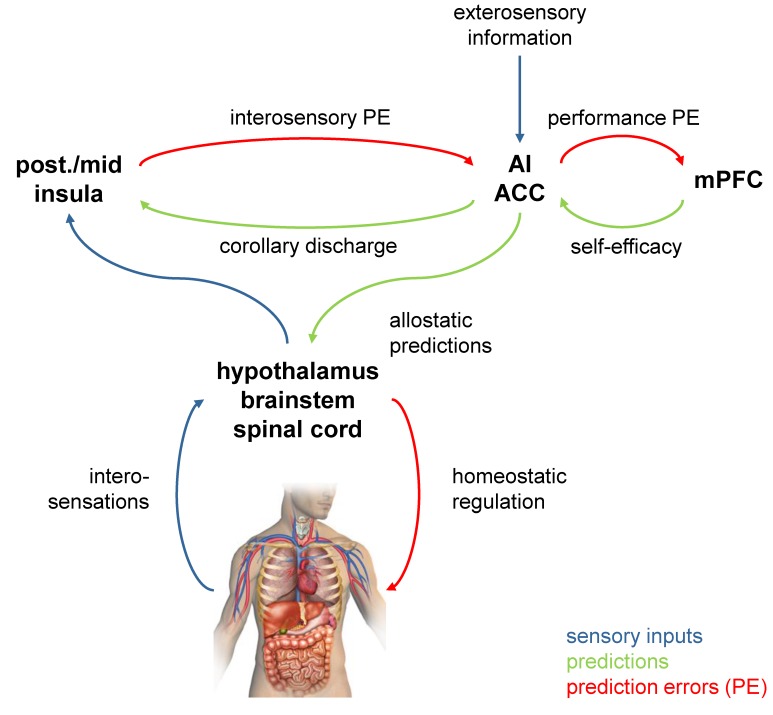Figure 3.
Neuroanatomically specific circuit model of interoception that plays a central role in theories of fatigue from computational psychiatry.14 The regions are based on anatomical investigations of interoeptive circuitry81; the network they form is thought to instantiate a predictive model of bodily states.111 in this hierarchical network, predictions are sent from higher to lower areas, while prediction errors (PEs; the difference between actual and predicted states) are signalled in the opposite direction and used to update predictions (‘predictive coding’110). Specifically, hierarchically higher visceromotor areas, such as the anterior insula (AI) and anterior cingulate cortex (ACC), are thought to tune homeostatic reflex arcs by means of allostatic predictions computed from bodily and environmental information. In turn, AI/ACC inform hierarchically lower areas, such as posterior and mid-insula, about the expected interosensory consequences (corollary discharge). The latter areas compare these predictions against actual interosensory input and return PE that serve to update the predictions by AI/ACC. At the top of the hierarchy, metacognitive areas (possibly medial prefrontal cortex, mPFC) monitor the level of PE and compute interoceptive surprise. The better the predicted bodily states can be achieved through regulatory action, the smaller PE and interoceptive surprise. Importantly, because of the closed-loop nature of brain–body interactions (figure 2), impairments of any part of the network can lead to chronic interoceptive surprise. This may lead to the metacognitive diagnosis of helplessness or low allostatic self-efficacy (lack of control over bodily states) and has been posited as the substrate for fatigue as a feeling state.14

